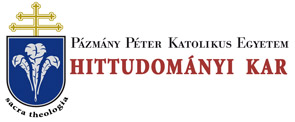Folia Theologica 3. (1992)
Charles Duggan: Decretal letters to Hungary
DECRETAL LETTERS 17 suram in illos ecclesiasticam poteris exercere. Verum quoniam iudices seculares in exhibenda iusticia personis ecclesiasticis sepe in iudicio sunt remissi, iam per consuetudinem est favore ecclesie introductum ut malefactores suos venerabilium locorum rectores possunt sub quo maluerint iudicio convenire. * * * WH 14 + 309, JL 15196 + 15213, ed. Századok 93 (1959) 415-17 no. 8, 1181-85. Wig. 2.+38(a), Coit. 4.5 (a-e[i])+ 5.36 (e[ii]). Pel. 4.52 (e[ii]), Bamb.O (olim Oriel 1) 57.39 (a) +40 (bed), App.Cr. 50.39 (a), Tann. 4.6.4-5 (abde[ii]), 1 Comp. 3.26.29 (a) + 2.1.8 (d), 1 Comp.Rot. 2.20.45 (c), Sang. 4.9.13 (a) + 5.S.8-9 (abdefii]), 1 Abr. 5.6.3 (e[iij), Alan. 2.1.4 (e[ii]), 2 Dun. 99 (e[ii]), Fuld. 2.2.5. (e[ii]), 2 Comp. 2.2.4 (e[ii]), Rice. (Fragm H) 37(d), X 3.20.45(a) + 2.1.8 (d) + 2.2.8(e[ii]). VI. To the bishop of Győr Ideo inter alios Advice to the bishop of Győr on the administration of justice Adecretal of Alexander III, dealing with juridical and procedural questions, is found in whole or parts in numerous collections. It occurs with various incipits —Nos inter alios, Nos qui inter alios, Cum nos inter alios and Ideo inter alios, of which the last is now accepted as the most probable form. Of its four component sections, three are listed in JL, addressed to the bishop (sic) of Genoa, and one to the archbishop of Canterbury.18 The widespread attribution to Genoa is problematical, since the recipient is described as bishop throughout the decretal’s transmission, until its editorial emendation to archbishop in the Decretales. In the course of its transmission through the collections, the address underwent a bewildering variety of forms, of which the most frequent was Genuensi or Januensi, for Genoa, but they also include Exoniensi and Bononiensi, for Exeter and Bologna, and many undecipherable forms — Dinnen, Luminensi, Lennen- si, Geminiensi, Gemietisi, Geriensi, Giriensi and others. In reply to the recipient’s questions, the pope first speaks in familiar chancery form of the pre-eminence of the Roman Church and its consequent duty to respond to consultations, and deals in turn with a series of juridical questions. Firstly, if the subject of a diocesan bishop is publicly 18 JL 13970 and 12411 respectively.
